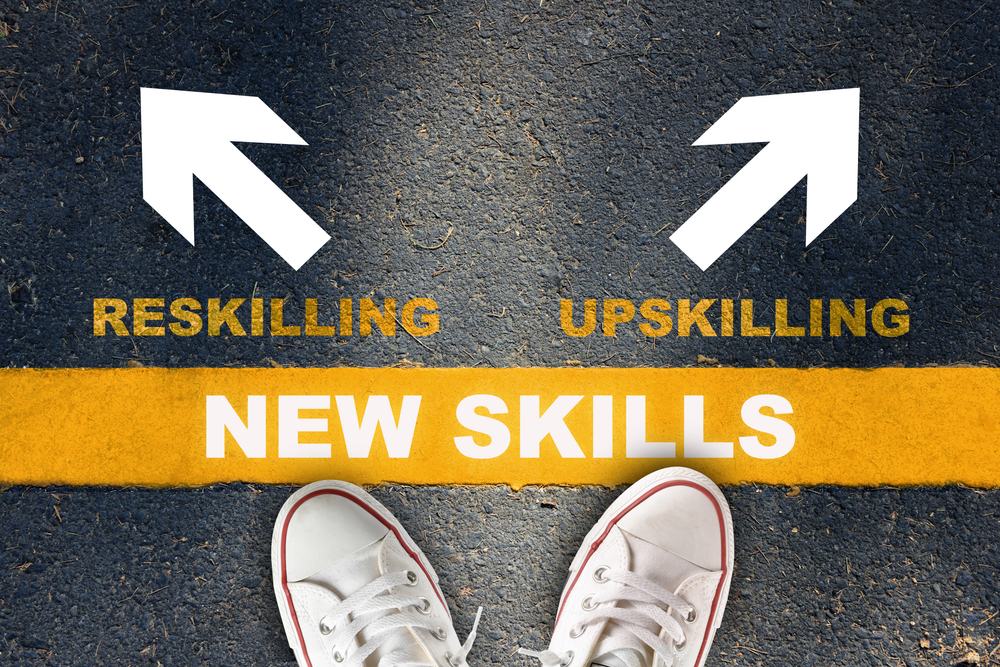Upskilling or Reskilling for Manufacturing Success
Posted on January 3, 2022
After two years of turmoil, supply chain disruption, and rapid changes in the way the world does business, the U.S. manufacturing sector is in rebound mode. And while this is welcome news, the industry is still confronting staff shortages and a massive skills gap in its existing workforce.
Despite spending more than $26 billion to improve employee skills in 2020, manufacturers expect more than 2 million jobs to remain unfilled between 2020 and 2030.
As older employees retire — and take their skills and knowledge with them when they go — manufacturers are having trouble convincing the next generation of workers that factory jobs are worth pursuing. Manufacturing is typically viewed as low tech or undesirable work, which means motivated job seekers are looking elsewhere.
The public perception of manufacturing isn’t going to change overnight, so what can companies do to fill essential gaps in the meantime?
Reskilling and upskilling provide answers. Training opportunities are a necessary part of business, and solid training programs are a must for a positive business culture, employee engagement, and maintaining knowledge and expertise among your employees.
New skills
Upskilling and reskilling are less about keeping up and more about advancing or expanding.
Reskilling involves learning a new set of skills for a new role in the business. Your employees have a chance to move laterally from one job to another within your organization. Reskilling also allows companies to retrain and retain employees whose positions have become redundant.
Upskilling is the process of learning new skills to enhance an employee’s skillset and allow them to advance along their current career path. Upskilling brings workers to the next step of their career and adds value for both the employee and your company.
Advantages of upskilling and reskilling
Investing in reskilling and upskilling provides clear advantages over the costs of hiring, onboarding, and training new employees. Benefits of this approach include:
- New opportunities. Both reskilling and upskilling create opportunities for valuable employees to take on new roles within your company. And when you work with already experienced employees, your business avoids the costs associated with bringing a new-hire up to speed.
- Developing plans for reskilling and upskilling begins with an honest assessment of the existing skill gaps in your company. Forward-thinking analysis creates an agile dynamic and leaves your business well prepared for whatever comes next.
- Because upskilling and reskilling involve job shadowing, on the job training, and a set of shared goals, both approaches encourage collaboration and teamwork. Collaboration increases engagement, loyalty, and employee trust in your company.
- Positive culture. Upskilling and reskilling initiatives send a message of commitment to your employees, increase their confidence and job satisfaction, and by extension, boost productivity and business longevity.
- Employee retention. Investing in employee training and career development keeps employee skillsets in alignment with the needs of your organization. A well-trained, well-placed employee who feels competent and productive is more likely to stay with your company and may be a viable candidate for leadership training.
- Talent recruiting. 83% of HR professionals report difficulty recruiting new talent. In the current job market, your hiring team needs all the help it can get. When employees feel a sense of purpose in their work, they become strong brand advocates and are more likely to recommend your organization to their contact network. Satisfied employees are a valuable recruiting tool.
Bolster your training
Building the work force of the future begins now, and the sooner companies and workers adapt to the new normal, the better. Information retention is critical to successful adaptation, and repetition is vital to reinforce the work-related material employees need. But it’s essential to avoid boring training activity. Consider these effective learning methods as you strategize for reskilling and upskilling:
- Video training. In-person training requires careful scheduling and planning, and it can take learners out of their work or home environments for extended periods of time, only for them to forget the bulk of the information presented. Video training modules allow workers to access content when it is convenient for them and adjust their training times to match their ability to absorb and retain new information.
- Virtual reality. Video provides an education, but virtual reality provides an experience. It allows learners to walk through new processes and practice new skills in a virtual hands-on environment. Users retain 75% of the new knowledge they’re exposed to in VR training, compared to just 5% for lecture-centered learning.
- Use a learning platform. Although it is easy to think of training as an occasional event, for maximum effect, it should be a consistently available and widely encouraged employee resource. Offer a digital channel to house your company’s training content and make it accessible on demand.
Upskilling and reskilling demonstrate your company’s commitment to its employees, increase retention, improve the capabilities of your current workforce, and help you attract new talent.
For more on attracting, training, and retaining skilled employees, find one our branches today. If your organization needs manufacturing staffing services, we can help. At TERRA, we understand the manufacturing industry’s dynamic needs and shifting demands.
Categories: Staffing Tips & Recruiting Trends
Tags: development, humanresources, training






